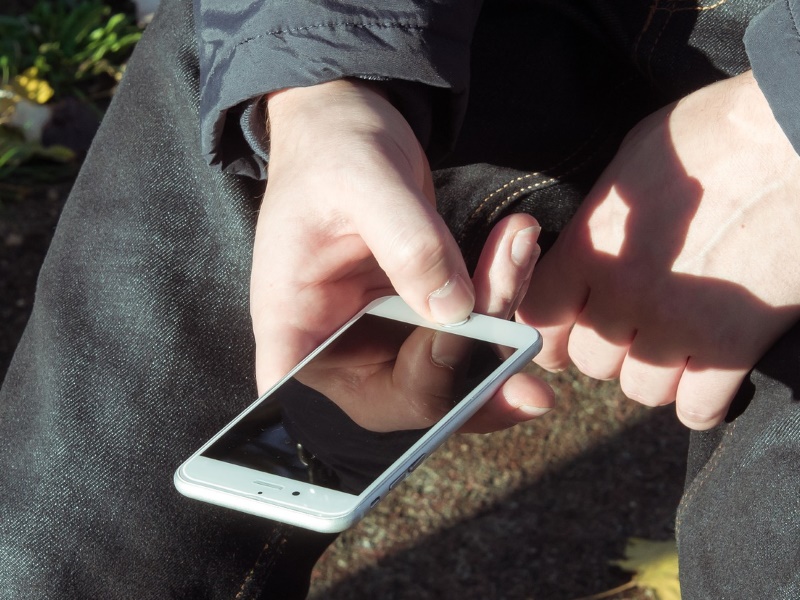- Home
- Mobiles
- Mobiles Opinion
- A Pressing Concern About the Next iPhone
A Pressing Concern About the Next iPhone

Bloomberg's Mark Gurman, who has an excellent track record when it comes to iPhone leaks, reports that the new gadget will have a much different home button. Per the article: "[The] new models will have a pressure-sensitive button that provides feedback to the user via a vibrating haptic sensation rather than a true physical click, according to the people."
In other words, it will look like a button and feel like a button but it won't actually, you know, be a button.
Which, I have to admit, troubles me a little bit.
Some of it is psychological. Physical buttons and switches feel direct and can make you feel as if you have more control. If your touch screen is unresponsive, you know you can hit the power button and the side button on an iPhone and reboot it.
On a broader level, the revamped home button could make Apple devices harder to repair. Several Apple consumers complain about "planned obsolescence" - the idea that the firm makes things hard to repair so that it can make money on new hardware. It's a bit of a tinfoil-hat way to look at things. But with no button and no easy way to get into a phone, we're likely to see fewer ways for third-party businesses to be able to replace parts.
And not being able to replace parts could, in effect, shorten a gadget's life span.
Complicating the function of the home button has already had this negative effect for some Apple customers. In February, many people were upset that replacing Apple's home button made their phones inoperable. Apple said it was to ensure that no one tampered with the button's built-in security features. That's a sensible explanation. But it still means that users have to go to Apple with their repair problems, and possibly get their phone replaced, thanks to the complications of the home button. This only stands to get worse if the rumors are true.
There are some general advantages, however, to ditching buttons, apart from aesthetics. One is that it leaves fewer places where outside debris such as sand, dirt, dust or water could get in and wreak havoc with your device. There's been a lot of pressure on Apple, for example, to make the iPhone more water-resistant. Fewer outside seams theoretically helps with that.
And software buttons aren't all bad, either. We have seen Android manufacturers go further than what Apple is rumored to be doing with the next iPhone and using software-only buttons with no physical spot on the phone to make screens bigger and free up screen space. The home, back and options buttons are on a bar that hides at the bottom of the screen when not in use.
Apple has shown that it can design for software buttons with its pressure-sensitive Force Touch on the new MacBook and the iPhone's 3D Touch. That technology means Apple can offer more than one dimension of function even with a flat screen. In fact, the options with those technologies go far beyond what a single button could ever do. If it's executed well and doesn't react every time something brushes against it - I'm looking at you, Xbox One power button - it's unlikely to detract much from the experience.
In fact, I only ever remember that my MacBook trackpad doesn't click when my computer's off. (Or, you know, when I'm writing an entire column about buttons.)
We all seemed to get used to losing the physical "call" and "end" buttons, or the physical snap of hanging up a flip phone. Given what's rumored from Apple, this will be a far smaller compromise of physical sensation than that. But we may miss the button in other ways.
© 2016 The Washington Post
For the latest tech news and reviews, follow Gadgets 360 on X, Facebook, WhatsApp, Threads and Google News. For the latest videos on gadgets and tech, subscribe to our YouTube channel. If you want to know everything about top influencers, follow our in-house Who'sThat360 on Instagram and YouTube.
Related Stories
- Samsung Galaxy Unpacked 2025
- ChatGPT
- Redmi Note 14 Pro+
- iPhone 16
- Apple Vision Pro
- Oneplus 12
- OnePlus Nord CE 3 Lite 5G
- iPhone 13
- Xiaomi 14 Pro
- Oppo Find N3
- Tecno Spark Go (2023)
- Realme V30
- Best Phones Under 25000
- Samsung Galaxy S24 Series
- Cryptocurrency
- iQoo 12
- Samsung Galaxy S24 Ultra
- Giottus
- Samsung Galaxy Z Flip 5
- Apple 'Scary Fast'
- Housefull 5
- GoPro Hero 12 Black Review
- Invincible Season 2
- JioGlass
- HD Ready TV
- Laptop Under 50000
- Smartwatch Under 10000
- Latest Mobile Phones
- Compare Phones
- Moto G15 Power
- Moto G15
- Realme 14x 5G
- Poco M7 Pro 5G
- Poco C75 5G
- Vivo Y300 (China)
- HMD Arc
- Lava Blaze Duo 5G
- Asus Zenbook S 14
- MacBook Pro 16-inch (M4 Max, 2024)
- Honor Pad V9
- Tecno Megapad 11
- Redmi Watch 5
- Huawei Watch Ultimate Design
- Sony 65 Inches Ultra HD (4K) LED Smart TV (KD-65X74L)
- TCL 55 Inches Ultra HD (4K) LED Smart TV (55C61B)
- Sony PlayStation 5 Pro
- Sony PlayStation 5 Slim Digital Edition
- Blue Star 1.5 Ton 3 Star Inverter Split AC (IC318DNUHC)
- Blue Star 1.5 Ton 3 Star Inverter Split AC (IA318VKU)

















